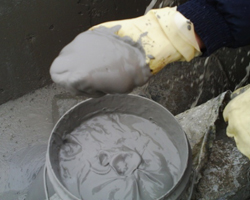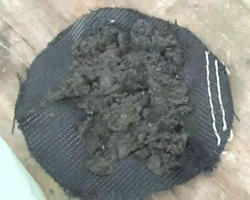

Two pumps (especially hydraulic dredging pump) with same capacity would have difference capacity of material production. Therefore, even lower pump capacity might have higher material production capacity than higher pump capacity. Sounds impossible, but it's true. Let me show you an example below;
|
Brand Y Model A Hydraulic Dredge Pump Specification
|
Dragflow Hydraulic Dredge Pump HY85B Specification
|
|||||||||||||||||||||||||||||
By looking on the comparison above, many people would have an impression that brand Y pump has greater performance which is 10m3/hour more than Dragflow hydraulic dredge pump HY85B. Is this about all?
If you are talking about dewatering, yes, you are correct; because what you are transfer is only water without any material. However, the answer is no for application in dredging because we are trying to get as much capacity of material as possible with the least capacity of water. What have you missed out? The fact that you have missed out is the capacity of material in dredging determined by material production rate by capacity. And the tricky part is the material capacity production rate will usually not show in the pump technical sheet. The capacity production rate is based on the pump capability subjected to type of material to be pumped, depth, delivery distance, and pump head.
Let's go through this example together by insert in the material production rate by capacity to let you have a better understanding. Assuming the material production rate by capacity for brand Y is 20%* and for Dragflow HY85B is 25%*. Resulting, for brand Y model A, there is only 72m3/hour (360 x 20%) are material and the rest 288m³/hour (360 - 72) are water. On the other hand, for Dragflow HY85B, 87.5m3/hour (350 x 25%) are material and the rest 262.5m3/hour (350 – 87.5) are water. I have summarize those figure above in following table (Notice that Pump capacity (slurry capacity) = Water capacity + Material capacity),
| CAPACITY | MATERIAL PRODUCTION RATE BY CAPACITY | MATERIAL CAPACITY | WATER CAPACITY | YEARLY MATERIAL CAPACITY | HYDRAULIC BOTH SIDE CUTTER | NEW MATERIAL PRODUCTION RATE BY CAPACITY | NEW MATERIAL CAPACITY | |
| BRAND Y MODEL A | 360m3 per hour | 20%* | 72m3/h | 288m3/h | 72m3 x 8 x 7 x 12 = 48,384m3 | - | - | 72m3/h |
| DRAGFLOW HY85B | 350m3 per hour @ 23m head | 25%* | 87.5m3/h | 262.5m3/h | 87.5m3 x 8 x 7 x 12 = 58,800m3 | 30%* | 55%* | 192.5m3/h |
Hourly difference on material capacity : 87.5m3 - 72m3 = 15.5m3
Yearly difference on material capacity : 58,800m3 - 48,384m3 = 10,416m3
WOW, can you see the difference??? Meaning to say you can have 15.5*m3 more per hour and approximately 10,000*m3 more if you are using Dragflow HY85B than Brand Y model A. And this is not all, because Dragflow have Hydraulic both side cutters (not available for most of the pump supplier) which will further increase on the material production rate by capacity up to 30%* more (read more on Can Your Pump Do This?).
Dragflow can pump more material than its competitor because it have higher material production rate by capacity although its pump capacity might be lower than its competitor as the example shown above. As the conclusion for above, the higher the material production rate by capacity, the higher capacity of material you will be getting.
Please do not confuse with material production rate by capacity and material production rate by weight. Both of them are totally different, especially, in terms of figures. As universal rules, electric sand pump will have up to 20%* material production rate by weight. Hydraulic dredging pump will have up to 60-70%* material production rate by weight.
* subjected to type of material, delivery distance, working depth and pump head
SUMMARY
- The same capacity of hydraulic pump will not have same capacity of material production
- The capacity of material in dredging determined by material production rate by capacity; it usually do not show in pump technical sheet.
- Pump capacity (slurry capacity) = Water capacity + Material capacity
- The less capacity of water we pump, the more material we got.
- The higher the material production rate by capacity, the higher capacity of material you will be getting
- The material production rate by capacity and material production rate by weight is totally different.
Dragflow, pumping the impossible!





